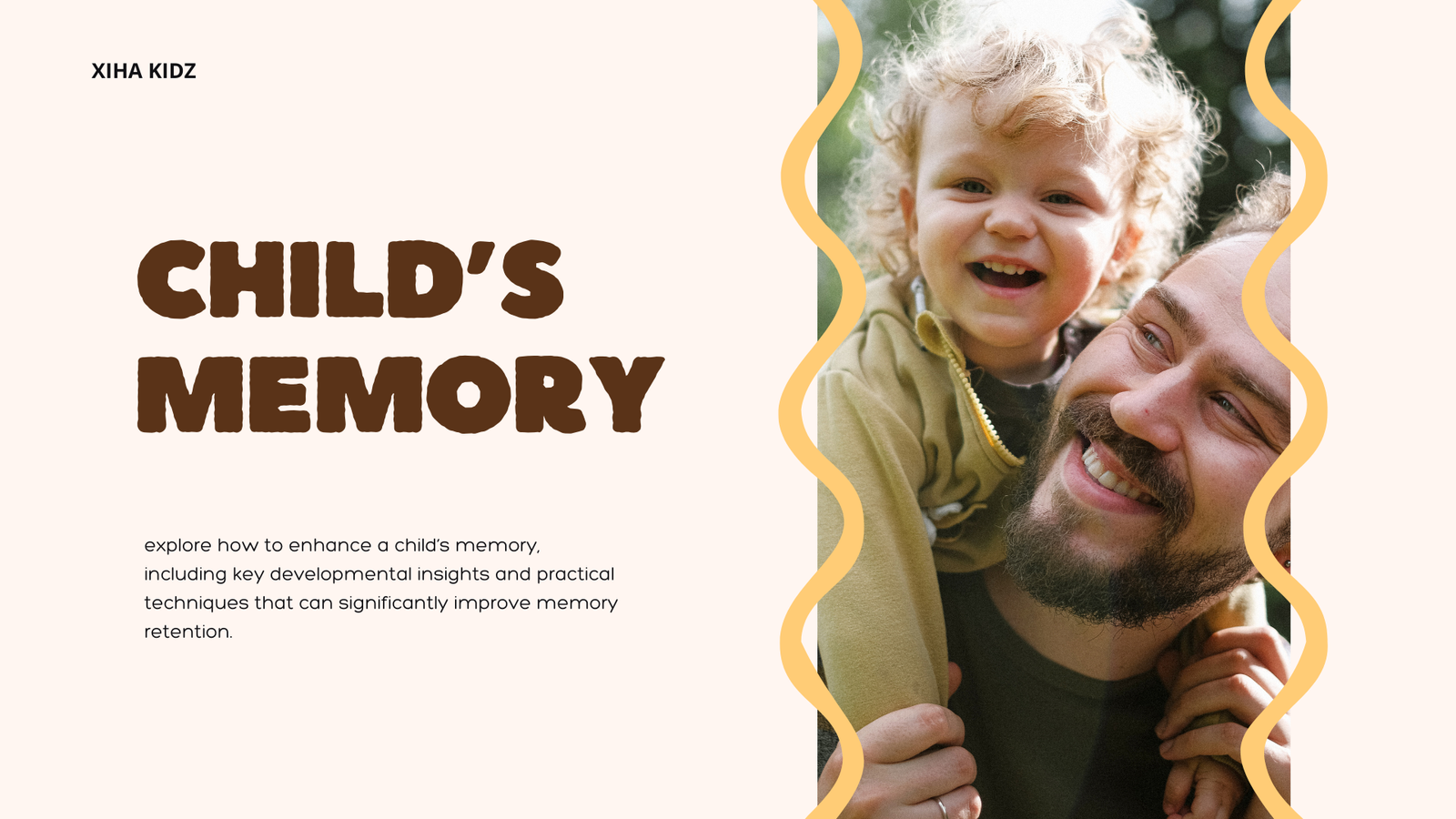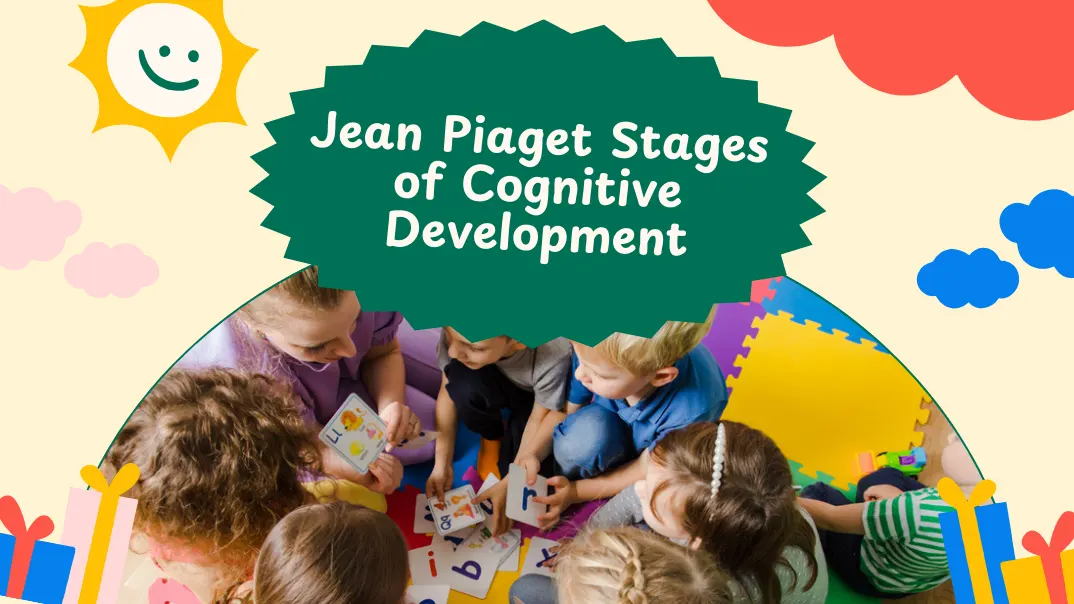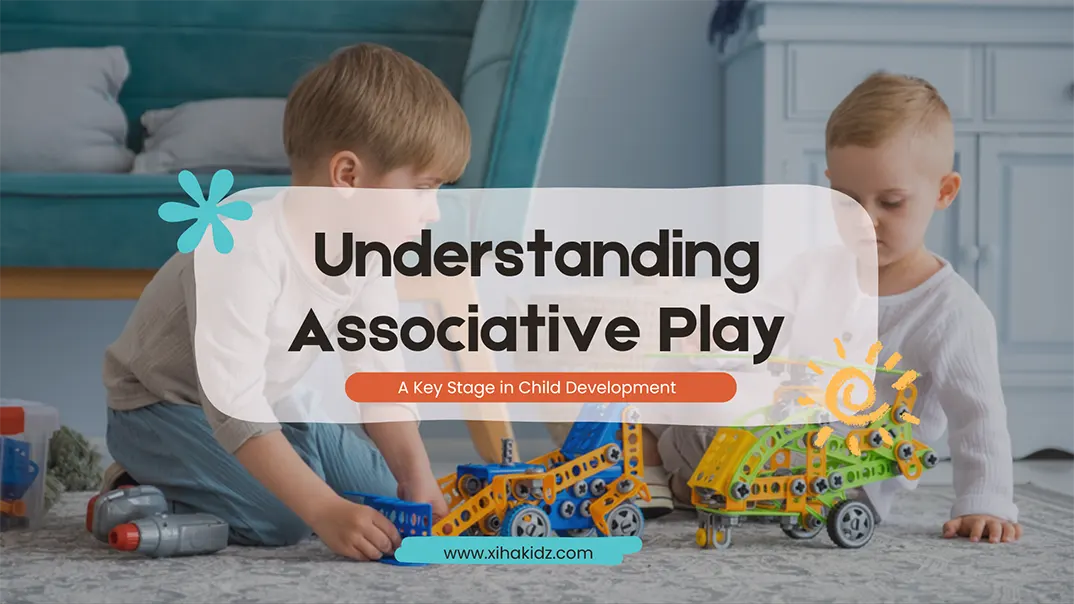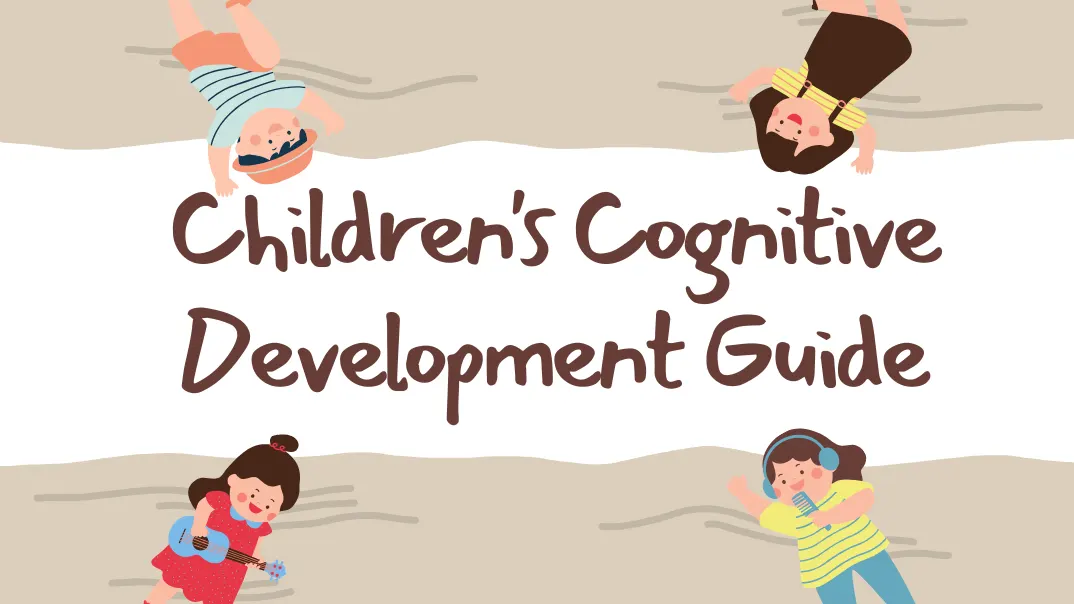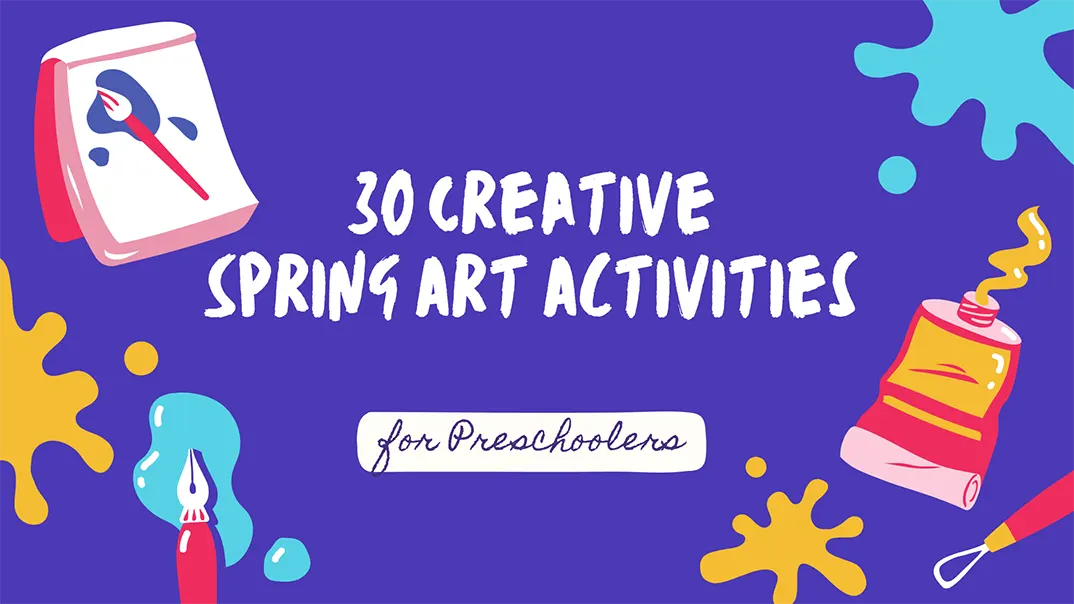When we think about early childhood education, we often focus on cognitive skills like reading or math. But have you ever considered the importance of motor skills in this phase? How does the ability to jump, draw, or hold a spoon impact a child’s development? Are we neglecting the physical skills that greatly influence a child’s growth and overall education?
Motor skills development in early childhood is not just about physical activity but fundamental to a child’s overall cognitive and emotional growth. From the first time a child picks up a toy to when they can run across the playground, every movement helps shape their brain. Understanding these skills and how to foster them early will ensure children develop into healthy, confident learners.
Understanding motor skills in the context of early childhood development allows parents and caregivers to provide targeted support that helps enhance these abilities. This article will guide you through motor skills, how they impact growth, and how to encourage development at each stage.
What Are Motor Skills?
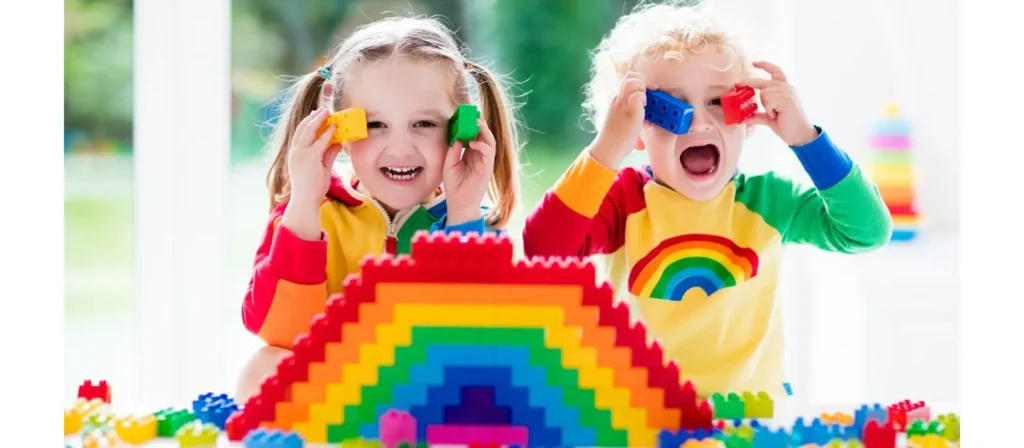
Motor skills refer to the abilities required to perform movements using the muscles and coordination of the body. They are a fundamental part of our daily lives, enabling us to carry out various tasks, from simple activities like walking and eating to more complex actions such as typing, driving, or playing sports.
These skills result from the coordination between the brain, nervous system, and muscles. The brain sends signals through the nervous system to control muscle movements, which are carried out smoothly and precisely. The more we practice these movements, the more efficient and automatic they become. For instance, when you grab a cup from a table, your arm and hand muscles work together to ensure the action is done correctly. This process involves strength and fine-tuned control to make the movement precise.
In everyday life, motor skills are constantly at work. Motor skills, whether walking, typing, climbing stairs, or more intricate activities like playing the piano, basketball, or painting, are essential. The quality and efficiency of these movements directly affect how smoothly we perform tasks.
Types of Motor Skills
Motor skills can be divided into two main categories: gross motor skills and fine motor skills. These two types represent different levels of muscle coordination and control, with each contributing to different aspects of physical movement.
What Are Fine Motor Skills?
Fine motor skills refer to the smaller, more precise movements involving the hands, fingers, and wrists. These skills are needed for tasks that require dexterity and detail, such as writing, buttoning a shirt, or threading a needle. Fine motor development begins after gross motor skills, and it is critical for cognitive development, as it helps children understand their environment through touch and manipulation of objects.
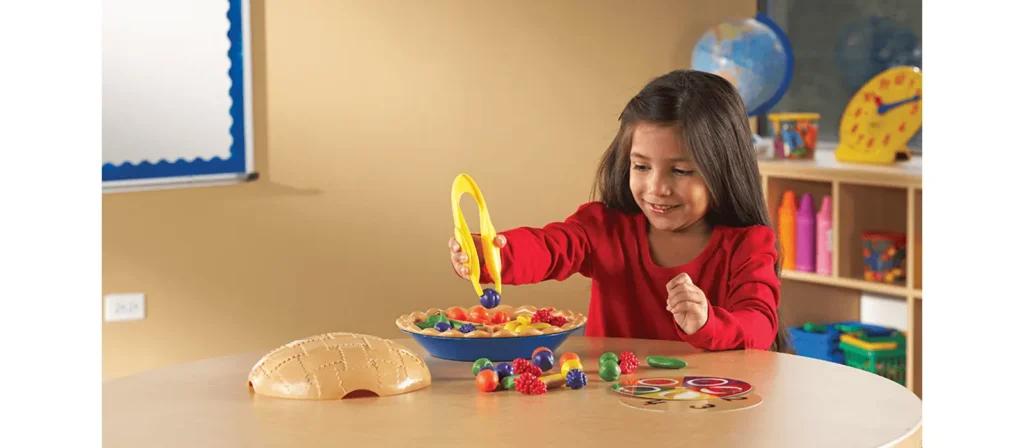
Fine Motor Skills Examples
- Writing: Using a pencil or pen to form letters and words.
- Buttoning a Shirt: Requires dexterity and the ability to manipulate small objects.
- Drawing and Coloring: Involves control of hand movements to create designs or colors within lines.
- Cutting with Scissors: A skill that requires hand-eye coordination and finger strength.
- Eating with Utensils: The ability to hold and manipulate a spoon or fork to feed oneself.
- Building with Blocks: Requires precise hand movements to stack and arrange objects without knocking them over.
Why Are Fine Motor Skills Important?
Fine motor skills are essential for several reasons:
- Daily activities: These skills are necessary for completing tasks such as eating, dressing, and writing.
- Academic success: Fine motor skills are needed for writing, drawing, and using tools in educational settings.
- Self-esteem and independence: Mastering fine motor skills allows individuals to feel confident in completing tasks without assistance.
- Cognitive development: Learning fine motor skills involves the brain’s fine-tuning of hand-eye coordination and strengthening neural connections.
- Creative expression: Fine motor skills enable individuals to engage in creative activities, including art, crafting, and music, allowing for personal expression.
What Are Gross Motor Skills?
Gross motor skills involve the large muscles of the body, responsible for big movements that require strength and coordination. These skills are essential for activities such as running, jumping, and climbing. They are foundational for physical development and typically develop earlier in a child’s life than fine motor skills. Gross motor skills allow for overall movement control, balance, and coordination, which are vital in daily life.
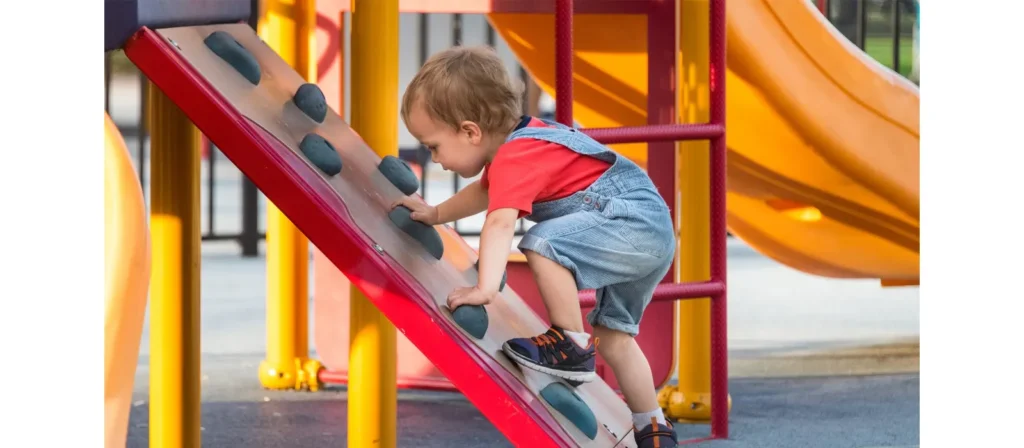
Gross Motor Skills Examples
- Running: A fundamental movement that requires coordination of legs and arms.
- Jumping: Involves powerful leg muscles and balance to propel the body off the ground.
- Climbing: Requires strength, balance, and the ability to coordinate movements between the arms and legs.
- Throwing: Uses the upper body and arms to propel an object, relying on coordination and power.
- Swimming: An activity that engages almost every muscle group in the body for movement through water.
- Cycling: A combination of balance, leg strength, and coordination for forward movement.
Why Are Gross Motor Skills Important?
Gross motor skills are crucial for several reasons:
- Physical health: They help develop strength, endurance, and cardiovascular health.
- Balance and coordination: Mastery of gross motor skills is essential for better body coordination and balance.
- Independence: As children and adults develop gross motor skills, they become more independent in performing daily tasks such as walking, dressing, and self-care.
- Sports and recreation: Gross motor skills are fundamental for engaging in sports, enhancing physical fitness, and improving overall physical performance.
- Social interaction: Many activities that involve gross motor skills, like playing team sports, contribute to socialization and teamwork.
Factors Influencing Motor Skills Development
Motor skill development is influenced by various factors that shape how individuals acquire and refine their abilities. These factors can be broadly categorized into biological, environmental, and social elements, each playing a crucial role in the timing and quality of motor skill development.
Physiological Factors
Genetics: Genetics plays a major role in motor skills development. A child’s genetic makeup determines the basic structure and function of their muscles, bones, and nervous system, impacting their motor abilities. For example, if a child’s parents are naturally athletic and have good coordination, they may inherit certain genetic traits that give them an edge in developing gross motor skills. However, it’s important to note that genetics is not the only determining factor, and environmental factors can also strongly influence.
Brain Development: The brain’s development is closely tied to motor skills development. In early childhood, the brain grows rapidly and forms new neural connections. As children practice and learn new motor skills, these experiences stimulate the brain’s growth and organization of neural pathways. For instance, the area of the brain responsible for controlling hand movements (the motor cortex) becomes more specialized as children practice fine motor skills like drawing and writing.
Muscle and Bone Development: The growth and strength of muscles and bones are essential for motor skills development. Children’s muscles and bones are still developing in infancy and early childhood. Adequate nutrition, including protein, calcium, and vitamins, is crucial for proper muscle and bone growth. For example, a calcium-rich diet helps build strong bones, which is necessary for supporting the body’s weight during activities like walking and running.
Environmental Factors
Family Environment: The family environment profoundly impacts a child’s motor skills development. Parents who provide opportunities for physical activity, such as taking their child to the park, playing ball games at home, or encouraging them to explore outdoor spaces, help their child develop gross motor skills. Regarding fine motor skills, parents who engage in activities like drawing, coloring, or building blocks with their children offer valuable learning experiences. For example, a parent who sits with their child and helps them thread beads promotes fine motor skills and hand-eye coordination development.
Kindergarten Environment: Kindergarten settings are crucial for developing a child’s motor skills. A well-equipped kindergarten with various play equipment, like climbing structures, swings, and balance beams, can help children develop gross motor skills. In the classroom, activities such as art projects, handicrafts, and using manipulatives like puzzles and building blocks support the development of fine motor skills. Teachers who plan structured physical education sessions and encourage children to participate in group games also contribute to developing gross and fine motor skills.
Cultural Factors
Cultural factors can influence motor skill development. Different cultures place varying levels of emphasis on certain physical activities, affecting how children develop motor skills. In some cultures, children may engage in more physical play, such as outdoor games or sports, from a young age, which promotes gross motor skill development. In other cultures, fine motor skills activities like crafting or learning to use tools may be emphasized, influencing the development of hand-eye coordination and dexterity. The activities encouraged in a child’s environment often align with cultural values and can shape the motor skills developed.
Creating an Environment That Fosters Motor Skill
The environment plays a crucial role in developing a child’s motor skills. In early childhood education settings like preschools and kindergartens, the design of the physical space can either support or hinder the development of motor skills.
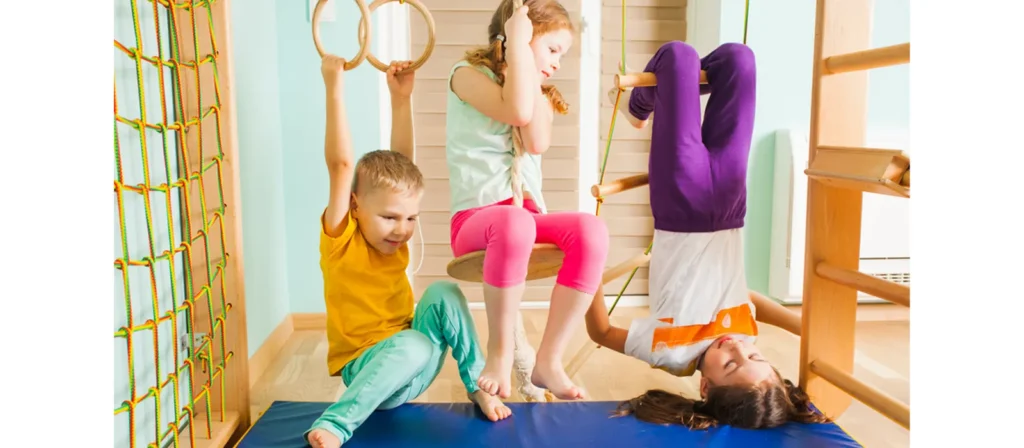
Creating a Motor Skills-Friendly Environment.
Preschools prioritizing motor skills development typically provide various opportunities for children to engage in gross and fine motor activities. Play areas with climbing structures, balance beams, and open spaces for running can help children build their gross motor skills. Meanwhile, activities like arts and crafts, puzzles, and building blocks encourage fine motor development.
Montessori and Reggio-inspired Environments.
Montessori and Reggio-inspired classrooms are designed to foster independence, creativity, and hands-on learning. In these environments, children have access to child-sized furniture and materials that encourage them to engage in fine and gross motor activities. For example, Montessori classrooms often feature low shelves that children can reach independently, promoting fine motor skills as children engage with puzzles, materials, and activities that require concentration and control.
Preschool Furniture and Its Impact on Motor Skills.
Proper preschool furniture is essential for creating an environment that supports motor skills development. Chairs, tables, and workstations appropriately sized for young children can help them engage in activities with greater ease and comfort. When furniture is designed with children’s physical needs in mind, it encourages the development of fine motor skills by allowing them to perform tasks like drawing, cutting, and assembling with greater ease and precision.
เปลี่ยนห้องเรียนของคุณด้วยโซลูชันเฟอร์นิเจอร์ที่ออกแบบเอง
Fine Motor Skills Development Milestones
Fine motor skills involve controlling small muscle movements, especially in the hands, fingers, and wrists. These skills are essential for performing tasks such as eating, writing, and engaging in creative activities. Here’s a guide for parents to understand what to expect regarding fine motor development as their child grows.
Infancy (0–12 months)
0–3 months:
- Grasp reflex: Babies naturally grasp when something touches their hand. They may not have control over it yet, but they will close their hand around objects in their palm.
- Reaching movements: At this stage, babies bring their hands toward their faces and reach out to touch objects.
4–6 months:
- Hand coordination begins: Babies will reach for and grab objects, though the movements may be clumsy. They can hold toys in their hands for a few seconds.
- Raking grasp: Babies begin to use their whole hand to rake objects toward them and can bring small objects closer.
6–9 months:
- Pincer grip development: By 6–9 months, babies can pick up smaller objects like small food pieces or toys using their thumb and index finger.
- Exploring with hands: Babies may begin exploring their environment by grasping and shaking toys or transferring objects from one hand to another.
9–12 months:
- Increased hand control: Babies develop more refined control over their hands and fingers. They can manipulate objects better, such as turning book pages or playing with stacking toys.
- Imitating simple gestures: Babies may try to copy simple hand movements, such as clapping or waving.
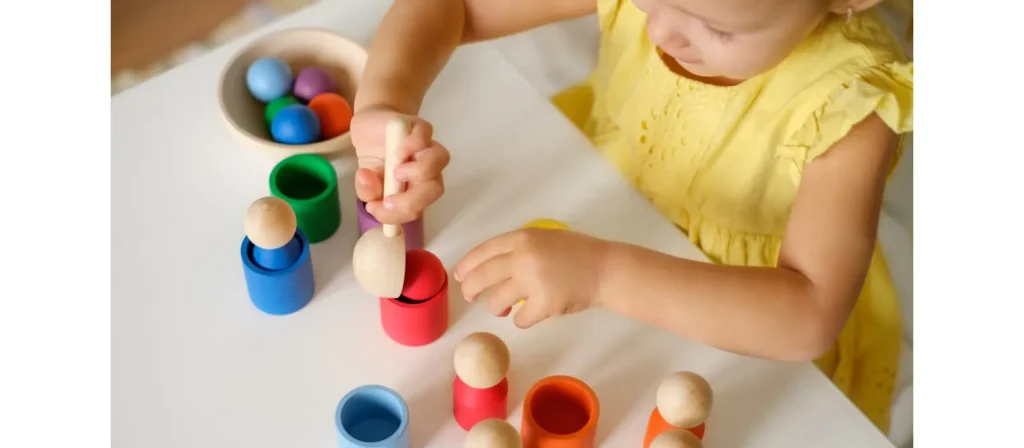
Toddlerhood (1–3 years)
12–18 months:
- Self-feeding with a spoon: Toddlers use a spoon or fork to feed themselves, though they may still be messy.
- Poking and pointing: They can point at objects they want and start to poke with their fingers, such as by pointing to an object or poking holes in playdough.
18–24 months:
- Grasping small objects: Toddlers refine their ability to pick up smaller objects and may begin stacking blocks or turning book pages one at a time.
- Drawing lines and circles: They can hold crayons or markers with a fist and make their first attempts at scribbling and drawing basic shapes like lines and circles.
2–3 years:
- More precise hand movements: Children stack small blocks (e.g., up to 6 or 7 blocks) and place small objects into containers.
- Use of scissors: With guidance, toddlers might try using safety scissors to cut paper along straight lines.
- Dressing skills: Children start to develop skills like putting on hats, pulling up pants, or putting on shoes (though they might need assistance with buttons or zippers).
Preschool Years (3–5 years)
3–4 years:
- Drawing recognizable shapes: By age 3, children can draw basic shapes like circles, squares, and sometimes even triangles. They may also start to imitate letters or numbers.
- Using scissors: With some assistance, they can cut along straight lines and may start to cut out simple shapes.
- Lacing and threading: Children develop the ability to thread beads onto strings or laces and start practicing activities like buttoning and unbuttoning clothes.
4–5 years:
- Drawing more detailed pictures: At this stage, children begin to draw recognizable pictures of people, animals, or objects with arms, legs, and facial features.
- Improved self-care: Children can begin dressing independently, like buttoning or zipping up their jackets.
- Using utensils with control: They become more skilled at using forks and knives during meals and begin to cut soft foods with safety knives.
School-Age (5+ years)
5–6 years:
- Writing letters and numbers: Children can write their names and begin to write simple words and numbers legibly. They develop more control when holding a pencil and using the proper grip.
- Using scissors for intricate tasks: They can cut along curved lines and more complex shapes with safety scissors.
- Independence in dressing: Children can button shirts, tie shoelaces, and dress themselves without assistance.
6+ years:
- Advanced drawing skills: At this stage, children can draw more detailed scenes, including faces, animals, and objects, with accuracy.
- Using tools: They can use various tools such as a pencil sharpener, a computer mouse, or even a keyboard with improved dexterity.
- Fine motor control in sports: Children can perform more refined movements in sports like throwing a ball, catching, or kicking, which involve hand-eye coordination and fine motor control.
Gross Motor Skills Development Milestones
Gross motor skills involve using large muscles to perform running, jumping, and climbing movements. These skills are essential for physical activities and overall health and development. Below is a guide to help parents understand the expected milestones for gross motor skills development at various stages of a child’s growth.

Infancy (0–12 months)
0–3 months:
- Head control: At this early stage, babies start to gain head control and can hold their heads up briefly when lying on their stomachs.
- Tummy time: During tummy time, babies begin to push up on their arms and lift their chests off the ground, which strengthens their neck, back, and arm muscles.
4–6 months:
- Rolling over: Around 4 months, babies begin to roll from their tummy to their back, and by 6 months, they may start rolling in the opposite direction.
- Sitting up with support: Babies can sit up with support, using their hands for balance.
6–9 months:
- Crawling: Between 6 and 9 months, babies start to crawl, initially using a belly crawl and later progressing to hands-and-knee crawling.
- Sitting independently: Many babies can sit without support by 9 months, improving their balance and trunk strength.
9–12 months:
- Pulling up to stand: Around 9 to 12 months, babies begin pulling themselves up to stand using furniture or other stable surfaces for support.
- Cruising: They may start “cruising” by holding onto furniture and walking while being supported.
Toddlerhood (1–3 years)
12–18 months:
- Walking: By 12 months, most babies will take their first steps. By 18 months, walking becomes more stable, though toddlers may still toddle or have a wide stance.
- Climbing: Toddlers start exploring their environment and may try to climb onto low furniture or stairs, showing increased strength and coordination.
18–24 months:
- Running: Around 18 to 24 months, toddlers begin to run, although they may still have a somewhat wobbly or uncoordinated gait.
- Kicking a ball: Toddlers may be able to kick a ball forward, though their movements might still be jerky.
- Walking up stairs: Some toddlers may start walking up stairs while holding onto a railing or an adult’s hand.
2–3 years:
- Climbing and balancing: At this age, toddlers may begin to climb on playground structures and balance on low beams or steps. They start to enjoy climbing higher structures and sliding down slides.
- Hopping and jumping: Children may attempt simply hopping on one foot or jumping with both feet off the ground.
- Improved running: Their running becomes faster and more controlled, although they may still have trouble stopping quickly.
Preschool Years (3–5 years)
3–4 years:
- Jumping with both feet: Children can jump forward or in place with both feet off the ground. This shows improved strength and coordination in their legs.
- Running with more control: Children can run better and stop quickly without tripping.
- Climbing: At this stage, children are confident in climbing stairs, playground structures, and even small ladders.
4–5 years:
- Hopping on one foot: By age 4, many children can hop on one foot and may alternate feet.
- Skipping: Some children begin to skip, which requires running and hopping.
- Throwing and catching: Children improve their ability to throw a ball forward and catch a ball with two hands, which requires more hand-eye coordination.
- Balancing on one foot: Children may be able to balance on one foot for a few seconds, showcasing improved balance and leg strength.
School-Age (5+ years)
5–6 years:
- Running with agility: Children can run more fluidly at this age and are better at changing directions quickly.
- Jumping and hopping with accuracy: They can hop on one foot with better accuracy and can jump forward for longer distances.
- Throwing with precision: Children can throw a ball at a target more accurately, developing hand-eye coordination.
- Bicycle riding: Many children learn to ride a bicycle with training wheels, improving balance and coordination.
6+ years:
- Advanced sports skills: By this age, children develop more advanced gross motor skills for organized sports like soccer, basketball, or swimming.
- Running, jumping, and dodging: Their gross motor skills become more refined, allowing them to run, jump, and dodge with better control, coordination, and agility.
- Hiking and endurance activities: Children become more capable of engaging in endurance activities, such as hiking or swimming laps, that require stamina and coordination.
Fine Motor Skills Toys for Children
Fine motor skills are essential for tasks that require hand-eye coordination, precision, and dexterity, such as writing, drawing, eating, dressing, and more. Luckily, numerous toys are designed to help children develop these skills in a fun and engaging way. Below are some fantastic fine motor skills toys that help children refine their hand movements, strengthen their muscles, and improve overall coordination.
1. Building Blocks
Building blocks, such as LEGO sets or wooden block sets, are excellent toys for fine motor development. These toys encourage children to manipulate and arrange pieces to build structures, improving their hand-eye coordination and precision. The small pieces also enhance pincer grasp (using the thumb and index finger), which is essential for tasks like picking up small objects and writing.
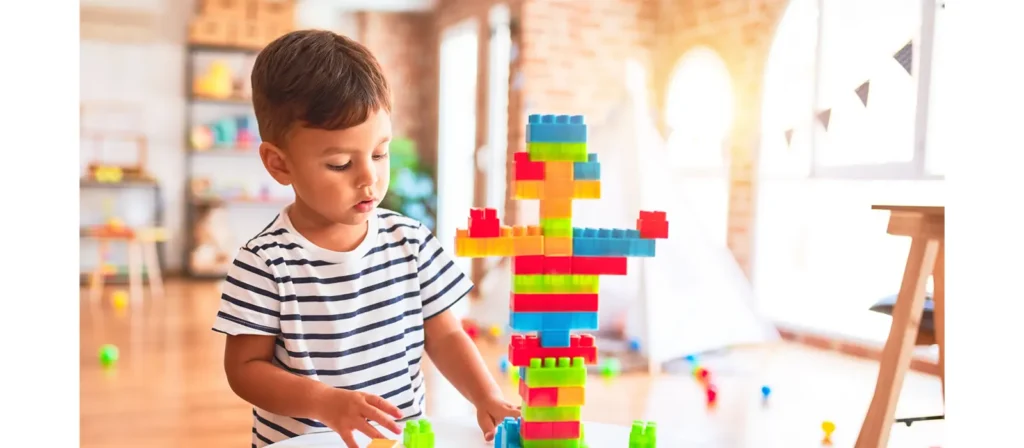
2. Playdough and Clay Sets
Playdough or clay allows children to mold, roll, squish, and shape the material, which requires small muscles in their hands and fingers. Manipulating dough helps strengthen hand muscles and refine their dexterity, especially when using tools to cut, roll, or press.
3. Puzzles
Puzzles help children practice their hand-eye coordination and fine motor control. Sorting and fitting shapes into their corresponding slots or assembling puzzle pieces encourages children to use their fingers with precision.
4. Lacing and Threading Toys
Lacing and threading toys, which involve threading string or laces through holes in cards, beads, or other objects, are great for practicing fine motor skills. This activity improves hand-eye coordination, precision, and fine finger control as children work to align and pass the lace through small openings.

5. Montessori-Inspired Fine Motor Toys
Montessori toys emphasizing fine motor skills typically involve buttoning, zipping, lacing, and using pegs or blocks. These toys allow children to practice essential life skills while strengthening their fine motor control and problem-solving abilities. They are often designed to be simple yet challenging enough to encourage children to engage with the tasks for extended periods.
6. Scissors and Cutting Sets
Safety scissors designed for young children are fantastic for developing fine motor skills. Cutting paper or other safe materials helps children build hand strength, improve their grip, and refine their control over small muscles. Cutting along lines or shapes also improves concentration and attention to detail.
Gross Motor Skills Toys for Children
Gross motor skills are fundamental for large movements requiring coordination between larger muscle groups, such as running, jumping, climbing, and balancing. These skills are essential for a child’s overall physical development and can be nurtured with the help of specific toys that promote movement, balance, and coordination. Below is a list of excellent toys designed to support the development of gross motor skills in children, helping them build strength, coordination, and agility in a fun and engaging way.
1. Tricycles and Balance Bikes
Tricycles and balance bikes are fantastic toys that promote the development of coordination, balance, and leg strength. Riding these bikes helps children learn to balance and coordinate their movements, essential skills for more complex physical activities like riding a bicycle.
2. Balance Boards
Balance boards are great tools for improving a child’s ability to balance and stabilize their body. These toys help children develop core strength, coordination, and spatial awareness by requiring them to maintain balance while on an unstable surface.
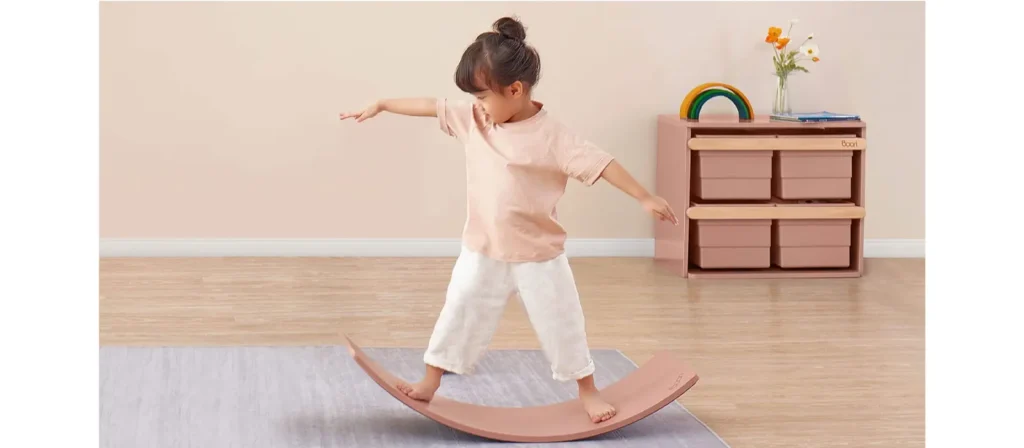
3. Sports Balls
Sports balls, such as soccer, basketball, and football, promote gross motor skills. Kicking, throwing, catching, and dribbling these balls help children develop their coordination, balance, and agility. These toys also encourage teamwork and cooperative play in group settings.
4. Ball Pits and Soft Play Mats
Ball pits and soft play mats provide a safe environment for children to practice crawling, jumping, and rolling around. These toys encourage active play and are great for toddlers beginning to explore physical activities. The soft surfaces make them safe for high-energy activities.
5. Trampolines
Trampolines (especially those designed for young children) are excellent for building balance, strength, and coordination. Jumping on a trampoline helps develop body control and spatial awareness. Smaller indoor trampolines with safety rails are ideal for younger children, while larger outdoor trampolines promote higher jumps and more advanced coordination.
6. Pikler Climbing Frame
A Pikler climbing frame typically consists of wooden bars arranged in an incline or a series of steps, often with a ramp or slide. It allows children to climb, crawl, slide, and maneuver in a way that helps them build and refine their gross motor skills. The design of the Pikler frame is intentionally simple, enabling children to explore movement freely at their own pace without needing external prompts or assistance.
ค้นพบผลิตภัณฑ์ทั้งหมดของเรา
เข้าถึงแค็ตตาล็อกที่ครอบคลุมของเราซึ่งมีเฟอร์นิเจอร์คุณภาพเยี่ยมและอุปกรณ์การเล่นสำหรับโรงเรียนอนุบาลและโรงเรียน
What Is Motor Skill Delay?
Motor skill delay refers to a slower-than-expected development or acquisition of motor skills in a child or individual compared to typical milestones. This delay can affect both fine and gross motor skills, making it more challenging to perform tasks such as walking, running, drawing, or using utensils. It may be a temporary issue, but in some cases, it can be linked to underlying developmental disorders, such as developmental coordination disorder (DCD), cerebral palsy, or autism spectrum disorder.
Motor skill delay can impact a person’s ability to engage in daily activities, social interactions, and learning. Early identification and intervention are key to supporting development and improving motor abilities. Physical or occupational therapy can often help individuals catch up to their peers.
Causes of Delayed Motor Skills Development in Children
Various factors can contribute to delayed motor skills development in children. Below are some of the most common causes:
1. Genetic and Hereditary Factors
In some cases, delays in motor skill development can be linked to hereditary factors. If family members have had difficulties with motor coordination or physical skills, the child may be more likely to experience similar challenges.
2. Brain Development Issues
The brain plays a significant role in controlling motor skills. If certain brain areas develop abnormally, it can lead to delayed motor skills. Conditions such as cerebral palsy or other neurological disorders can disrupt the brain’s ability to send effective signals to muscles, resulting in delays in movement.
3. Physical Health Issues
Children who are born prematurely, have low birth weight, or experience other physical health problems may have delayed motor skill development. Their muscles and bones may take longer to develop, affecting their physical abilities.
4. Environmental and Situational Factors
The environment in which a child grows up can also influence motor development. A lack of opportunities for physical play, poor nutrition, or excessive screen time can all contribute to delays in motor skill development. Children who do not have regular access to physical activities are less likely to develop strong motor skills.
5. Psychological Factors
Psychological factors such as low self-confidence, anxiety, or shyness can also play a role in delayed motor skill development. A child who feels nervous or afraid of failure may avoid physical activities, preventing them from practicing and improving their motor skills.
Signs of Delayed Motor Skills Development in Children
Children with delayed motor skills may show various signs that indicate they struggle to reach developmental milestones. These signs can manifest in both gross and fine motor skills:
1. Gross Motor Skill Delays
- Unsteady Walking or Running: The child may take longer to learn to walk and may have trouble with balance when running or moving quickly.
- Difficulty with Jumping: They may find performing activities like jumping, hopping, or skipping hard.
- Lack of Coordination: The child may seem clumsy when trying to catch or throw a ball or in activities requiring more complex movements like riding a bike.
2. Fine Motor Skill Delays
- Issues with Writing: Children may struggle with holding a pencil properly or forming letters correctly.
- Difficulty with Using Tools: Tasks that require fine motor skills, like using scissors, buttons, or tying shoelaces, may be challenging for them.
- Poor Hand-Eye Coordination: Activities like assembling puzzles or building with blocks might be more difficult for them as they struggle to coordinate their hands with what they see.
How to Address Delayed Motor Skills Development?
Early identification and intervention are key to helping children overcome delayed motor skills development. Here are some strategies that can help:
1. Seek Professional Help
If you suspect that your child has delayed motor skills development, it’s important to consult with a pediatrician, physical therapist, or occupational therapist. These professionals can assess your child’s motor skills, identify any underlying issues, and develop a personalized plan to help improve their abilities.
2. Provide Opportunities for Physical Activity
Encourage your child to engage in various physical activities that promote gross and fine motor skills. Swimming, cycling, running, and jumping can help develop strength and coordination. At the same time, fine motor tasks such as drawing, building with blocks, or playing with modeling clay can improve hand-eye coordination.
3. Incorporate Fine Motor Skill Exercises
You can help your child improve their fine motor skills through simple activities such as drawing, threading beads, playing with puzzles, or practicing handwriting. These exercises will enhance their dexterity and hand-eye coordination.
4. Offer Emotional Support
Providing positive reinforcement and emotional support when your child participates in physical activities is important. Celebrate their efforts, no matter how small, and avoid criticism or negative feedback. Building confidence is crucial in helping your child overcome feelings of inadequacy.
5. Encourage Social Interaction
Fostering an environment where your child can interact with peers in structured and unstructured settings will help them develop motor skills and social abilities. Encourage team games, sports, or group play that involve physical activity to help your child gain confidence and improve their coordination.
บทสรุป
In conclusion, motor skills are not just about physical movement; they play an essential role in a child’s cognitive, emotional, and social development. Parents and educators can help children build a strong foundation for learning and independence by understanding and supporting both gross and fine motor skill development. The earlier we nurture these abilities, the better-equipped children will face future challenges.
ค้นพบผลิตภัณฑ์ทั้งหมดของเรา
เข้าถึงแค็ตตาล็อกที่ครอบคลุมของเราซึ่งมีเฟอร์นิเจอร์คุณภาพเยี่ยมและอุปกรณ์การเล่นสำหรับโรงเรียนอนุบาลและโรงเรียน


